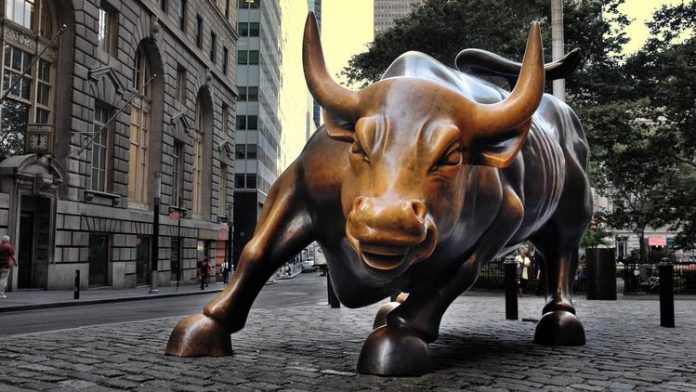The market’s rising again this morning after investors had the weekend to digest last month’s stunning jobs report.
The Labor Department revealed on Friday that the U.S. economy added (not subtracted) 2.5 million payrolls, shattering the 8 million job loss consensus estimate.
Equities surged on the news as scores of analysts deemed the COVID-19 recession “finished.” Economist Ed Yardeni, who previously predicted a recovery by late 2022, has now revised his projections greatly in the wake of the historic monthly jobs gain.
“The economy may very well be catching up with the stock market rather than the stock market going off on its own,” Yardeni said on Friday.
“The market has been a ray of sunshine — basically investors being convinced that we’ll get out of this, and the economy will recover along with earnings. So far, that forecast seems to be working out pretty well.”
Yardeni went on to praise the government for retaining a large number of payrolls at the height of the pandemic.
“In hindsight, [the jobs report] kind of makes sense because we had the Paycheck Protection Program that was basically implemented in April, encouraging small businesses to keep people on their payrolls.”
Michael Pearce, Capital Economics’ senior U.S. economist, offered a more sobering (yet still cautiously optimistic) take earlier this morning.
“The 2.5 million rebound in employment last month reverses only a small fraction of the jobs lost since February,” Pearce warned.
“But considering we and the consensus had been braced for another large decline, it builds on the signs from some of the other macro data this week that economic activity is rebounding faster and more vigorously than we had anticipated.”
And if the U.S. economy is truly in recovery, then that would mean the recent bear market will have been the shortest on record – something Marc Chaikin, CEO of Chaikin Analytics, explained in a note.
“It appears that the most rapid bear market in history has been followed by the most dramatic recovery in history,” Chaikin wrote.
“While COVID-19 cases are still growing in certain states, particularly outside of densely populated urban areas, investors see the glass as half-full and are looking ahead 12-18 months.”
The market has often been described as a “forward-looking mechanism.” The economy, meanwhile, “looks back.”
These are basic principles of the efficient market hypothesis (EMH), which states that share prices reflect all information and consistent alpha generation – gains superior to the overall market – is impossible.
It’s what drives many analysts to suggest that, similarly, investors can’t “beat the market.” That, of course, has been proven false by many prolific investors and nimble short-term traders over the years.
EMH disciples would say that the market looks three to six months (not 12-18 like Chaikin says) ahead of itself at any given moment. Right now, it appears as though the market believes corporate earnings will almost reach their pre-COVID-19 levels by December 2020 at the latest. Chaikin’s 12-18 month window, while more realistic in terms of recovery, argues investors are far more patient than EMH assumes.
History has proven otherwise.
From where the U.S. economy currently stands, does a near-completely recovery by December seem likely? Perhaps
Are there doubts that American companies will enjoy such a rapid rebound? Absolutely.
And that uncertainty – the risk that a full-bore, no-breaks recovery stumbles within the next six months – is what could cause the next sell-off.
That’s not to say the market will crash again. Nor will the bear market resume.
However, every rally needs a “cool down” period at some point. The post-coronavirus rally almost had one back in May. A legitimate dip is, eventually, almost guaranteed when share prices are soaring week after week.
Moreover, it’s equally true that stocks won’t surge indefinitely. Especially with civil unrest and U.S.-China tensions simmering in the background.
Bulls can feel confident in staying long for the moment, but stacking any new long positions could be a fool’s errand.
Because once the market “gives up the ghost” and the selling begins, it could be spectacular.
Even if the economy’s long-term prospects remain somewhat positive.








